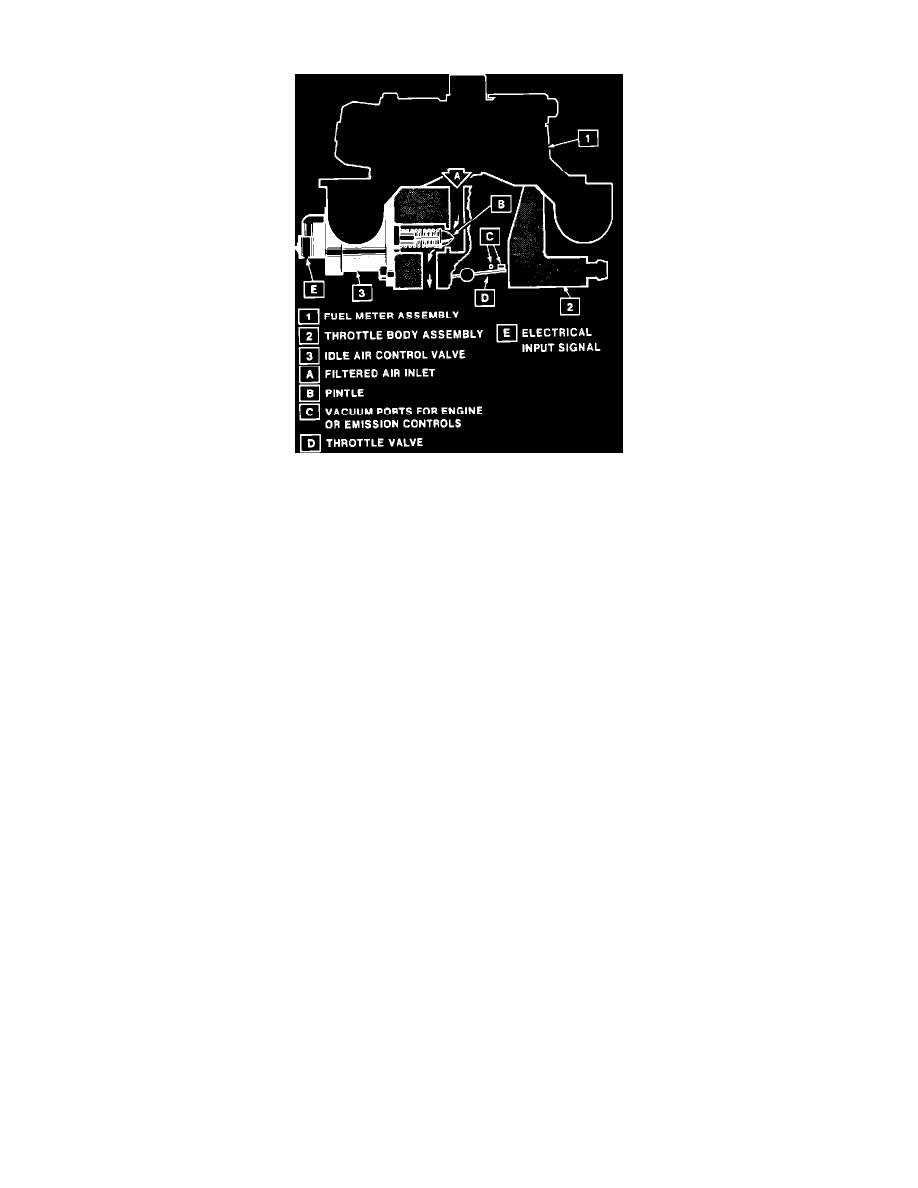Century Estate Wagon L4-151 2.5L VIN R TBI (1987)

Idle Speed/Throttle Actuator - Electronic: Description and Operation
Idle Air Control Operation
PURPOSE
The purpose of the idle air control (IAC) valve is to provide a way for the engine control module (ECM) to control engine idle speed.
OPERATION
Engine idle speeds are controlled by the ECM through the Idle Air Control (IAC) valve mounted on the throttle body. The ECM sends voltage
pulses to the IAC motor windings causing the IAC motor shaft to move in and out a given distance for each pulse, (referred to as IAC counts on a
scan tool). This movement controls airflow around the throttle plates, which in turn, controls engine idle speed, on either a hot or cold engine. IAC
valve pintle position counts can be seen by using a scan tool. 0 counts corresponds to fully closed passage, while 140 counts or more (depending
on application) corresponds to full flow. While the IAC valve controls airflow through the throttle body, (and thus idle speed) a minimum amount
of air flow goes past the throttle plates. The throttle plate position is set by the throttle stop screw and plugged at the factory to avoid unnecessary
tampering.
DIAGNOSTIC NOTES:
^
If the IAC valve is disconnected and reconnected with the engine running, the idle rpm may be wrong. In this case, the IAC has to be reset.
^
When servicing the IAC, it should only be disconnected or connected with the ignition OFF. This will keep from having to reset the IAC.
^
For diagnosis and testing procedures, see COMPUTERIZED ENGINE CONTROLS.
